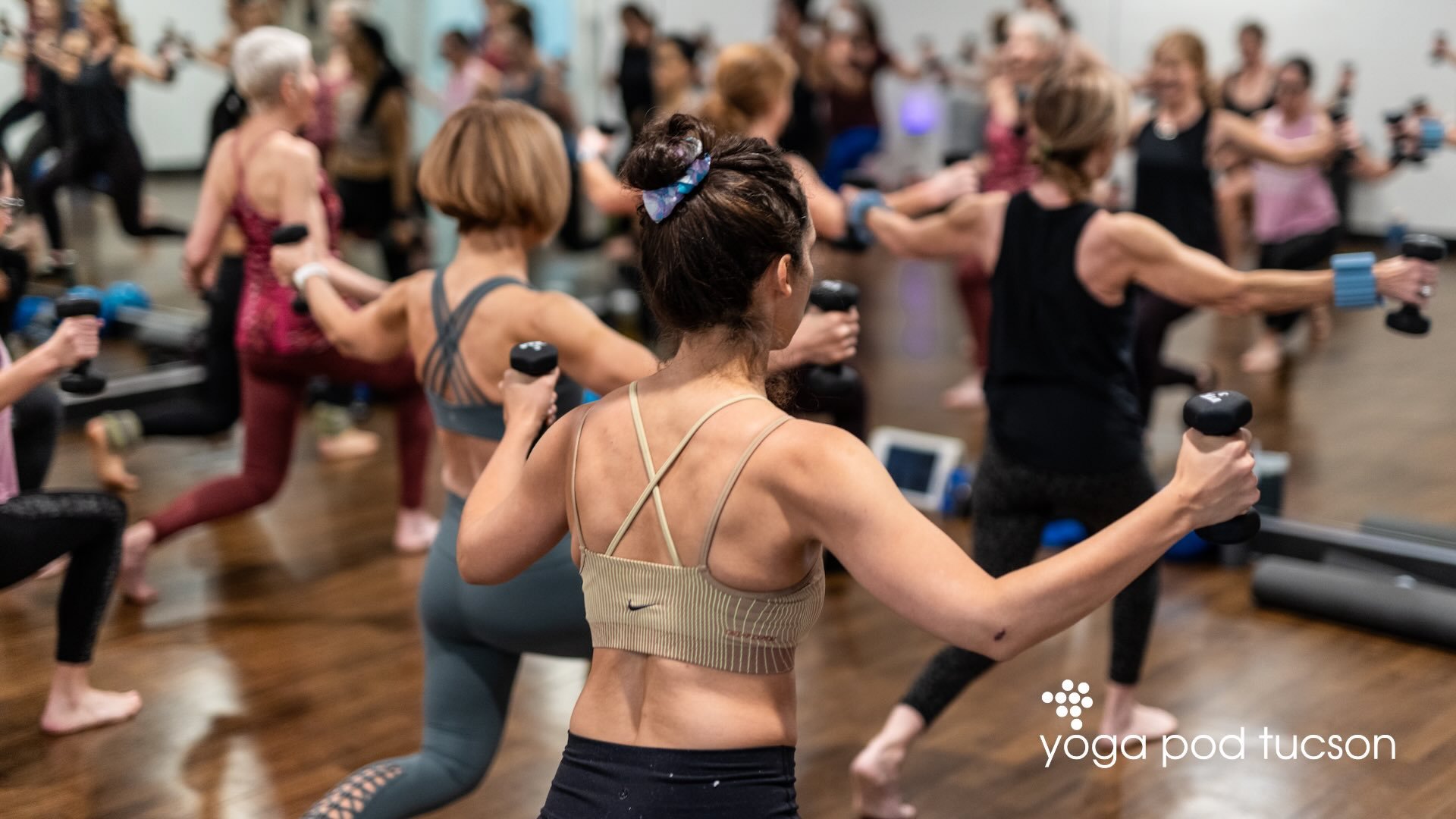the podTEA
Welcome to the podTEA - where we spill on what’s happening in the studio, what we’re working through in real life, and all the good stuff that doesn’t always make it to the group chat.
From sweaty highs to quiet resets, from barre burn to breathwork, from mindful-mess to mindful movement. This is where movement meets wellness meets real life.
It’s honest. It’s real. It’s human. And it’s all part of the practice.
Because yoga? It’s just the beginning.
💙 From your Yoga Pod Tucson besties.
You 🧿 Belong 🧿 Here

Tucson, Meet Your New Favorite Fitness Couple: Barre & Yoga! 💕💪
Tucson, Meet Your New Favorite Fitness Couple: Barre & Yoga! 💕💪
At Yoga Pod Tucson, we believe in the power of mindful movement, community, and empowering individuals to feel safe and strong in their bodies. Our Tucson yoga studio offers a unique combination of barre and yoga, creating the ideal synergy for a balanced, strong, and mindful practice. While yoga provides incredible benefits for mobility, breath awareness, proprioception, and inner connection, incorporating a barre-based group fitness class into your routine can elevate and perfectly complement your yoga practice. Barre not only improves strength and stability but also nurtures the body in ways that deeply integrate yoga’s expansive movements.

Yoga Nidra: The full body meditation you never knew you needed. 💙
YOGA NIDRA: THE FULL BODY MEDITATION YOU NEVER KNEW YOU NEEDED! 💙
Ever feel physically drained and mentally wired? Yoga Nidra might be exactly what you need! This guided meditation helps your body relax deeply while keeping your mind aware and present. It's the perfect way to reset and recharge in the busy-ness of life. 🌙

What is Yoga? An Ever-Evolving Perspective at Yoga Pod Tucson.
Yoga is a practice that evolves with time, offering various paths to self-awareness, liberation, and peace. From ancient texts to modern postural yoga, it’s a practice that unites the mind, body, and spirit, and is accessible to all.

